《Theory and Practice of Direct Methods IN crystallography》
| 作者 | M.F.C.Ladd R.A.Palmer 编者 |
|---|---|
| 出版 | PLENUM PRESS·NEW YORK AND LONDON |
| 参考页数 | 421 |
| 出版时间 | 没有确切时间的资料 目录预览 |
| ISBN号 | 0306402238 — 求助条款 |
| PDF编号 | 811533688(仅供预览,未存储实际文件) |
| 求助格式 | 扫描PDF(若分多册发行,每次仅能受理1册) |

Contents1
1.Principles of Direct Methods of Phase Determination1
in Crystal Structure Analysis1
G.Allegra1
1.1.Introduction1
1.2.Spherical Symmetry of Atoms:Sayre's Equation4
1.3.Unitary and Normalized Structure Factors6
1.4.Karle-Hauptman Determinants7
1.5.Structure Invariants and Seminvariants9
1.6.Probability Theory12
1.7.Solving the Phase Problem for a Real Structure16
1.8.Refinement of Phases18
1.9.Possible Future Developments of Direct Methods19
References21
2.Definition of Origin and Enantiomorph and Calculation of|E| ValuesD.RogersPART Ⅰ:Definition of Origin and Enantiomorph23
2.1.Introduction23
2.2.Some Preliminaries24
2.3.Invariance32
2.4.Variation of Phase among the Laue-Related Refiections36
2.5.Defining the Origin43
2.5.1.Primitive Centrosymmetric Space Groups43
2.5.2.Nonprimitive Centrosymmetric Space Groups49
2.5.3.Noncentrosymmetric Space Groups50
2.5.4.Primitive Noncentrosymmetric Space Groups57
2.5.5.Nonprimitive Noncentrosymmetric Space GroupsZ69
2.6.Some Unusual Requirements of S/I Selectors71
2.7.In Conclusion76
Appendix 2A.177
Appendix 2A.280
PART Ⅱ:Calculation of|E|Values82
References91
3.Symbolic Addition and Multisolution Methods93
M.F.C.Ladd and R.A.Palmer93
3.1.Introduction93
3.2.Symbolic Addition:Centrosymmetric Case100
3.2.1.Phase Determination in Space Group Pī:Pyridoxal Phosphate Oxime Dihydrate100
3.3.Symbolic Addition:Noncentrosymmetric Case103
3.3.1.Phase Determination in Space Group P21:Tubercidin104
3.4.Advantages and Disadvantages of Symbolic Addition113
3.5.Multisolution Methods113
3.5.1.Introduction:Multisolution Philosophy and Brief Description of the Program MULTAN113
3.5.2.Centrosymmetric Case:Papaverine Hydrochloride118
3.5.3.Noncentrosymmetric Case:Methyl Warifteine and Dimethyl Warifteine118
3.5.4.Experience with Large Structures:Ribonuclease-Potassium Hexachloroplatinate127
3.6.Success Is Not Guaranteed140
3.6.1.Some Prerequisites for Success in Using Direct Methods140
3.6.2.Figures of Merit:a Practical Guide141
3.6.3.Signs of Trouble,and Past Remedies When the Structure Failed to Solve141
3.6.4.Comments on Molecular Scattering Factors142
3.7.More Recent Developments of the Multisolution Method:Magic Integers144
References149
4.Probabilistic Theory of the Structure Seminvariants151
Herbert Hauptman151
4.1.Major Goal151
4.2.Introduction152
4.3.Structure Invariants153
4.4.Structure Seminvariants155
4.5.The Structure Seminvariants Link the Observed Magnitudes|E| with the Desired Phases?158
4.6.Probabilistic Background159
4.7.Three-Phase Structure Invariant159
4.7.1.Space Group Pl159
4.7.2.Space Group Pī162
4.8.Four-Phase Structure Invariant(Quartet)162
4.8.1.Space Group Pl162
4.8.2.Space Group Pī168
4.9.The Neighborhood Principle172
4.10.More on Quartets:Higher Neighborhoods173
4.10.1.Third Neighborhoods of the Structure Invariant φ4=φh+φk+φl+φm174
4.10.2.Higher Neighborhoods175
4.10.3.Probability Distributions in Pl Derived from the Third(Thirteen-Magnitude)Neighborhoods176
4.10.4.Probability Distributions in Pī Derived from the Third (Thirteen-Magnitude)Neighborhoods181
4.11.Two-Phase Structure Seminvariants(Pairs)186
4.11.1.Space Group Pī187
4.11.2.Space Group P21188
4.11.3.Space Group P212121192
4.12.Concluding Remarks196
References196
5.Application of Calculated Cosine Invariants in Phase DeterminationWilliam Duax,Charles Weeks,Herbert Hauptman,George DeTitta,David Langs,Edward Green,and Gert Kruger196
5.1.Introduction199
5.2.Accuracy of Cosine Calculations201
5.3.Quartets,Quintets,and Triplets206
5.4.∑1 Cosines211
5.5.Pair Relationships213
5.6.Strong Enantiomorph Selection218
5.7.NQEST223
5.8.Automated Procedures226
5.9.Exercises226
References229
6.Phase Correlation with Calculated Cosine Invariants for Routine Structure AnalysisPaul T.Beurskens and Th.E.M.van den Hark229
6.1.Phase Correlation Procedure231
6.1.1.Definitions232
6.1.2.Selection of the Starting Set232
6.1.3.Phase Generation233
6.1.4.Correlation Equations233
6.1.5.End of the Phase Correlation Procedure234
6.1.6.Quadruples and Quartets in Relation to the Phase Correlation Procedure234
6.1.7.Dinaphtho[1,2-a;1'2'-h]anthracene235
6.2.Simple Cosine-Invariant Calculations241
6.2.1.Aminomalonic Acid243
6.2.2.Scaling of Calculated Triple Invariants244
6.2.3.Definition of KABhk Values244
6.3.Phase Correlation with Calculated Triple Invariants246
6.3.1.Centrosymmetric Space Groups247
6.3.2.Noncentrosymmetric Space Groups with Three Centric Projections248
6.3.3.Noncentrosymmetric Space Groups with One Centric Projection249
References253
7.Application of Direct Methods to Difference Structure FactorsPaul T.Beurskens and Th.E.M.van den Hark253
7.1.Introduction255
7.1.1.Some Applications of DIRDIF Procedures256
7.1.2.Two-Dimensional Wilson Plot257
7.2.Difference Structure Factors259
7.2.1.Probability Considerations261
7.2.2.Classification of Reflections262
7.3.Description of the Procedure264
7.3.1.Tangent Refinement264
7.3.2.Origin Specification267
7.3.3.Trichloro-bis(triethylphosphine)cobalt(Ⅲ)268
7.3.4.Heptahelicene269
7.4.Some Observations269
References270
8.Phase Extension and Refinement Using Convolutional and Related Equation SystemsDavid Sayre270
8.1.Introduction271
8.2.Outline of the Convolutional Equation Systems272
8.3.Outlines of the Phasing Methods Based on the Convolutional Equation Systems276
8.3.1.Tangent-Formula Refinement277
8.3.2.Density Modification Methods278
8.3.3.Least-Squares Phase Retinement280
8.3.4.Davies-Rollett Technique281
8.4.Comments on the Phasing Methods Based on the Convolutional Equation Systems281
8.5.Computational and Practical Aspects282
8.6.Summary284
References284
9.Maximum Determinant Method287
G.Tsoucaris287
9.1.Introduction287
9.2.Inequalities and Algebraic Properties of Determinants288
9.2.1.Unitary and Normalized Structure Factors288
9.2.2.Karle-Hauptman Determinants(1950)290
9.2.3.Determinants as a Function of Structure Invariants293
9.2.4.The Ellipsoid Representation of Inequalities,and Efficiency in Phase Determinationv296
9.3.Maximum Determinant Rule304
9.3.1.Definition304
9.3.2.Proof305
9.3.3.Eigenvectors and the Ellipsoid Representation312
9.3.4.Regression Equation318
9.4.Practical Applications323
9.4.1.Low-Order Determinants,and Determination of Structure Invariants323
9.4.2.Medium-Order Determinants,and Their Use in ab initio Structure Determination328
9.4.3.High-Order Determinants,and Their Use in Protein Structure Determination332
9.5.New Gram Determinants336
9.5.1.Use of Stereochemical Information-Known Fragments336
9.5.2.The"Moduli-Model-Phase"Determinant343
9.5.3.The Equiprobability Function in Direct Space343
Appendix 9A.1.Expression of the Hermitian Form Qm for m=1,2,345
Appendix 9A.2.Joint Probability for All Structure Factors:Compound Probability Law347
Appendix 9A.3.Negative Triplet Determination348
Appendix 9A.4.Determination of the Sign Invariants of the Last Row of Am+1350
Appendix 9A.5.Hilbert Space and Gram Determinants357
Referencesv359
10.Molecular Replacement Method361
Patrick Argos and Michael G.Rossmann361
10.1.Introduction361
10.2.Preliminary Theoretical Considerations364
10.3.Rotation Function366
10.3.1.Fundamentals366
10.3.2.Reciprocal-Space Expression367
10.3.3.Matrix Algebra369
10.3.4.Symmetry372
10.3.5.Sampling and Background375
10.3.6.Locked Rotation Function and Klug Peaks375
10.3.7.Recognizing Known Fragments377
10.3.8.Fast Rotation Function379
10.4.Translation Problem381
10.4.1.Introduction381
10.4.2.Neither Structure is Known383
10.4.3.Positioning of a Known Molecular Structure386
10.4.4.Both Structures are Known388
10.4.5.Use of Heavy Atoms to Determine a Molecular Center388
10.4.6.Use of Packing Considerations389
10.5.Phase Determination389
10.5.1.Introduction389
10.5.2.Reciprocal-Space Equations390
10.5.3.Real-Space Molecular Replacement393
10.5.4.Equivalence of Real-and Reciprocal-Space Molecular Replacement395
10.6.Noncrystallographic Symmetry and Heavy-Atom Searches397
10.7.Applications of Molecular Replacement410
10.8.Conclusions412
References413
INDEX419
《Theory and Practice of Direct Methods IN crystallography》由于是年代较久的资料都绝版了,几乎不可能购买到实物。如果大家为了学习确实需要,可向博主求助其电子版PDF文件(由M.F.C.Ladd R.A.Palmer PLENUM PRESS·NEW YORK AND LONDON 出版的版本) 。对合法合规的求助,我会当即受理并将下载地址发送给你。
高度相关资料
-

- DIRECT METHODS IN CRYSTALLOGRAPHY
- 1980 ACADEMIC PRESS
-
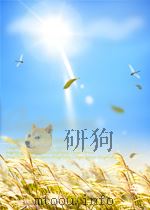
- THEORY AND PRACTICE OF WRITING
- 1996 LONGMAN
-
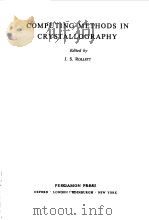
- COMPUTING METHODS IN CRYSTALLOGRAPHY
- 1965 PERGAMON PRESS
-
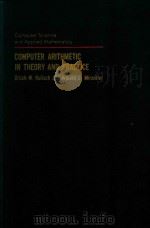
- Computer arithmetic in theory and practice
- 1981 Academic Press
-
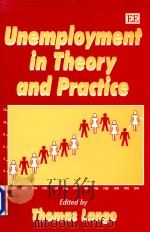
- Unemployment in Theory and Practice
- 1998 Edward Elgar
-

- MODERN CRYSTALLOGRAPHY Ⅰ SYMMETRY OF CRYSTALS METHODS OF STRUCTURAL CRYSTALLOGRAPHY
- 1981 SPRINGER-VERLAG BERLIN HEIDELBERG NEW YORK
-
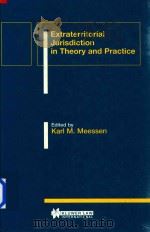
- Extraterritorial Jurisdiction in Theory and Practice
- 1996 Kluwer Law International
-

- GRAPHICAL AND TABULAR METHODS IN CRYSTALLOGRAPHY
- 1922 THOMAS MURBY AND CO.
-

- MATHEMATICAL CRYSTALLOGRAPHY AND THE THEORY OF GROUPS OF MOVEMENTS
- 1903 AT THE CLARENDON PRESS
-

- COLOUR IN THEORY AND PRACTICE
- 1952 CHAPMAN AND HALL LTD.
-

- THE STATE IN THEORY AND PRACTICE
- 1935 THE VIKING PRESS
-

- THEORY AND PRACTICE IN EXPERIMENTAL BACTERIOLOGY
- 1965 CAMBRIDGE AT THE UNIVERSITY PRESS
-

- THE LIVELIHOOD OF MAN ECONOMICS IN THEORY AND PRACTICE
- 1963 CHATTO & KING
提示:百度云已更名为百度网盘(百度盘),天翼云盘、微盘下载地址……暂未提供。➥ PDF文字可复制化或转WORD

